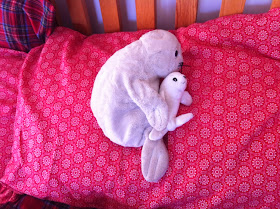In all of my classes, especially those on ethics, I teach
students about the decision-making processes we must undergo as philosophical
thinkers addressing issues and making choices. One of the key pieces of this
process is a model I use as a sort of flow chart for figuring out what we know
and do not know about a given situation. Presumably, these different pieces of
information will combine to give us a more holistic approach to solving the
wide range of conundra we broach in class and in our lives.
Some of the questions in the model include:
What are
the facts in this situation?
What
information is missing?
A la Donald Rumsfeld, are there "unknown unknowns," i.e. things we don't know that we do not know? (Of course there are, sweetie!)
Insofar as we can determine them, what are the assumptions and biases involved?
A la Donald Rumsfeld, are there "unknown unknowns," i.e. things we don't know that we do not know? (Of course there are, sweetie!)
Insofar as we can determine them, what are the assumptions and biases involved?
Are there
unconscious assumptions and biases at play as well?
Who holds
the power? Who gets to make the decisions about, on the one hand,
possible courses of action,
and, on the other,
which information is available/public/”true” vs. which information is privileged/private?
and, on the other,
which information is available/public/”true” vs. which information is privileged/private?
Who are the stakeholders? Who benefits? Who may not benefit – or be adversely affected?
What is the heart component? How do the parties involved feel?
I try to use these questions when I write, much as I do in
teaching.
As far as writing as a spectrum-y writer with my own particular
quirks, strengths and weaknesses, I have to also ask myself where that might
figure into the equation. For example, last week I attended an “Autism & Asperger’s
Expo.” I ran into a colleague there and he looked puzzled to see me. I
explained that I have a son who is on the spectrum and who was attending a
Pragmatic Language/Social Skills Group located in the same building. At this
news, he looked, so far as I could tell,
shocked and dismayed. But, as I had barely recognized him in the first place
(see: prosopagnosia), I certainly cannot trust my assessment of his expression.
I do know for a fact that he said, quite appropriately, “I didn’t know that” –
and that’s all I can reliably report.
In another instance, I had incomplete information and told a story that was based on the information I had that in the end was not true to
what had actually happened due to missing infomation. This post, about a
family who seemed to have been inadvertently “outed” as having an autistic
member, really resonated with people and
parents with a variety of personal and family differences as a common aspect of
our lived experience. What had actually happened emerged as slightly but
significantly different from what I had reported. The server in question, who
happens to read this here blog (? I feel honored!), had mentioned to Pardner
that – actually! –
1.
the Dad of the family had been distant, detached
and fidgeting with his iPhone most of dinner (therefore he was not suddenly
alienated in some way by feeling labeled), and
2.
the family had itself volunteered the name of
the school the son was visiting (and therefore the server had not presumed).
I was chagrined. I spoke about it with a few people, all of
whom said stuff like, “Oh, the story’s so true that the facts are almost
irrelevant,” or “It’s all relative, anyway.” I (lovingly) disagreed. While it
is true that families and individuals with differences can potentially have
relatively more challenging interactions than “normal” people, and that this
may well have been a painful experience for said family for whatever reason,
what really happened really does matter. I take it as my responsibility to make
that very clear, in this scenario and beyond.
Information is always partial. As writers, we know this fact
full well. Some non-fiction writers even embrace it in pursuit of polemical
points. This partiality of knowledge holds for all writing, including that which is considered “objective.” At the
same time, I do believe in Truth. There can be unknown or temporarily-disputed
facts, and different perspectives on the same truth, but I am not, never have
been, never will be a relativist. I am always happy to clarify, or to add other
perspectives, whether or not they are in tune with my own, so long as they add
to the truth and honesty of a piece. In short, I, along with most writers I
respect, aim our endeavors toward truth, at some times getting closer than
others…
In this case, the parties concerned were totally bighearted
about my getting it not-quite-right: I believe the server’s actual words were,
“Oh, I get it! I just don’t want you and [Full Spectrum Mama] to think I am an
insensitive bimbo.” Heck to the no.
So, because I know it’s just what everybody was waiting for,
I have developed a model for writing creative non-fiction that suits my goals
for integrity and transparency:
Figure I – Venn Diagram of Ideal Non-Fiction Writing
Composition
Full Spectrum Mama is an Anonymous blog, with the vast
majority of readers reading from afar. Yet I believe there is a sort of trust
inherent in the blogger-reader relationship that I would never intentionally
violate by deliberating lying or writing with bad intentions. So I have also
crafted this handy diagram of unsavory elements that are never welcome in this
blog:
Love,
Full Spectrum Mama



